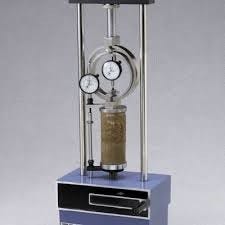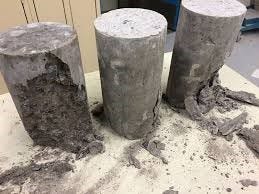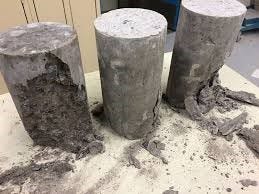
Per- and polyfluoroalkyl substances (PFAS), man-made chemicals in a broad range of consumer products, are on a growing number of regulators’ radars, as they are concerned about their potential environmental impacts.
There are many unknowns about PFAS, which encompass thousands of chemicals, each with unique properties. Scientists are trying to zero in on how they behave when they end up at landfills, which are often their final destination. The U.S. Environmental Protection Agency (EPA) has funded several PFAS research projects focused on landfill in the past year.
As the search for a greater understanding continues, there are some knowns around PFAS, which the solid waste industry is paying attention to, as these discoveries will be relevant to treatment options. What is known is that PFAS do not degrade easily—even chemical reduction does not completely break them down. This largely is because� they bond very tightly to polymers.
 Gomathy Radhakrishna Iyer, an engineer at SCS, further explains, “The structure of PFAs is a carbon and fluorine bond, and that bond is considered one of the strongest in nature. We know of chlorofluorocarbons (CFC) [a volatile derivative of methane, ethane, and propane], which created problems where they still exist sometime after they’ve been released. PFAS has the same kind of carbon-fluorine bond as CFC. And it’s in more numbers, which makes them even more inert and hard to degrade. Breaking this bond is what makes finding effective leachate treatments challenging."
Gomathy Radhakrishna Iyer, an engineer at SCS, further explains, “The structure of PFAs is a carbon and fluorine bond, and that bond is considered one of the strongest in nature. We know of chlorofluorocarbons (CFC) [a volatile derivative of methane, ethane, and propane], which created problems where they still exist sometime after they’ve been released. PFAS has the same kind of carbon-fluorine bond as CFC. And it’s in more numbers, which makes them even more inert and hard to degrade. Breaking this bond is what makes finding effective leachate treatments challenging."
There are several treatment methods that have been applied at landfills. The commonly used methods include biological treatments such as membrane bioreactors and sequential batch reactors.
Then there are physical-chemical methods, which are the most effective of current options for PFAS. They include ion exchange, where leachate passes through resins in a vessel that binds PFAS; reverse osmosis where leachate flows through a membrane, leaving the separated PFAS to be collected in a solution; and granular activated carbon (GAC) where PFAS pass through a GAC vessel and adsorb into the carbon; the pretreated leachate passes through.
But all systems have limitations -- in reverse osmosis, there is residue requiring further treatment. Others such as GAC are very energy intensive or have components that must be frequently replaced. And the biological treatments work with help from microbes, but microbes can’t break the bond.
Leachate treatment technology currently used at landfills depends on their discharge limits and site constraints.
Further says Radhakrishna Iyer, when PFAS is brought in to discharge limit requirements, these standalone technologies now used at landfills may not be sufficient. One or more technologies will need to be coupled to meet the complete discharge limit requirements, she says.
In addition to these more established technologies, she points to three newer ones that show promise: high-voltage electrode, ultrasound and thermolysis.
“All three have been researched and we know they are effective, but they have not been practically implemented at landfills yet,” she says.
Thermolysis, involving high temperature that breaks the carbon-fluorine bond is effective with concentrated, nonsoluble PFAS. High-frequency ultrasound also breaks down bonds. The process results in byproducts of carbon, fluorine and sulfite that are easy to further break down. High-voltage electrode plasma uses electricity instead of sound to break the bond. It can be used in all PFAs but is very expensive.
As researchers and practitioners point to landfills as a source of PFAS, there are indications that a fair amount is either staying in the landfill or somehow being changed to shorter chain compounds, which may be less harmful PFAS constituents. So, from a societal point landfills could be a good sequestering place for PFAS, says Ivan Cooper, principal CEC.
Nevertheless, many landfills show concentrations in leachate that cause regulators concern, especially considering it’s in so many products: carpets, raincoats and other waterproof garments, food packaging, stain- and water-repellant clothing, some cosmetics and cookware among others.
“While it seems to be fairly well contained, I’m concerned about concentrations in leachate. And if it’s a problem, how do we reduce those concentrations for discharge?” notes Cooper.
 He points to biosolids that contain PFAS as an example.
He points to biosolids that contain PFAS as an example.
“When those wastes are landfilled, are they going to leach out? asks Cooper. "So there has been investigations to understand technologies that can reduce PFAS leachate, with solidification of the biosolids or other management techniques for residuals in mind,”
Daniel Cassidy, associate professor, department of Geological and Environmental Sciences, Western Michigan University, has done research on solidification of PFAS-containing wastes as a way to prepare them to be landfilled.
Through solidification, PFAS is taken from a water-soluble or liquid phase to a solid phase, as the movement of the material is less mobile and better controlled in the solid phase.
"Waste-containing PFAS is sitting out there in barrels or in treatment cells and is not as secure as it would be in landfill. So, to reduce the mobility of PFAS in the environment, you want it in landfill," he confers with Cooper and others in the industry.
He continues, “But before we can put it there, we must make sure it has enough strength to not run like water in order to reduce its leachability. If it’s runny it will flow where gravity pulls it."
Solidification and stabilization as treatments entail mixing wastes with amendments. The amendments can adsorb PFAS to get them out of the water phase and solidify them. And some are cementing agents that strengthen waste so that it maintains its structural integrity.
Cassidy illustrates how stabilization and solidification can help with the example of using activated carbon to treat PFAS-containing leachate, followed by another step.
“The carbon will become so high in PFAS, the carbon no longer removes it from water," he says. "Material will have a heavy concentration of PFAS-containing carbon. It sticks to the carbon, but you want to make sure it stays on the carbon (or in the solid phase) so PFAS does not leach out. Cementing together the particles in waste will form a layer around the PFAS on the surface of the carbon, encapsulating it."
Cooper and CEC are also looking at treatment techniques to limit PFAS adsorption to mitigate risk of it leaching out. For example, engineers there are currently exploring technologies such as modified bentonite clay adsorbance. It appears to require minimal pretreatment and can adsorb large quantities of PFAS in leachate at relatively low cost. Initial tests show over 99 percent removal of many PFAS constituents in nonstick cookware using modified bentonite clay, says Cooper.
Cassidy describes three tests that can be done before and after treatment, specifically to determine if stabilization and solidification are effective: a leachate test, a strength test, and a permeability test.
Leachate testing involves sampling untreated material to see how much PFAS leaches out. When the test is repeated on treated material, if stabilization and solidification are effective, operators will see much lower concentrations of PFAS in leachate.
Strength testing entails putting waste material between two plates and measuring the force required to make the material crack. Greater force required equates to stronger material, which is important if you put PFAS-containing material in a landfill.
Testing permeability involves using a permeameter to measure the rate that water passes through the material; the less permeable a material is, the less water will pass through and dissolve PFAS.
Meanwhile, PFAS continues to be found, not only in landfills, but environments across a wide landscape—from wastewater treatment plants where it infiltrates sludge, to soil at airports that use PFAS-containing foam fire retardants in their fire control training.
As landfills are appearing to be a potentially viable resting place for these materials, research into new testing and treatments continues.
About the Author(s)
You May Also Like




